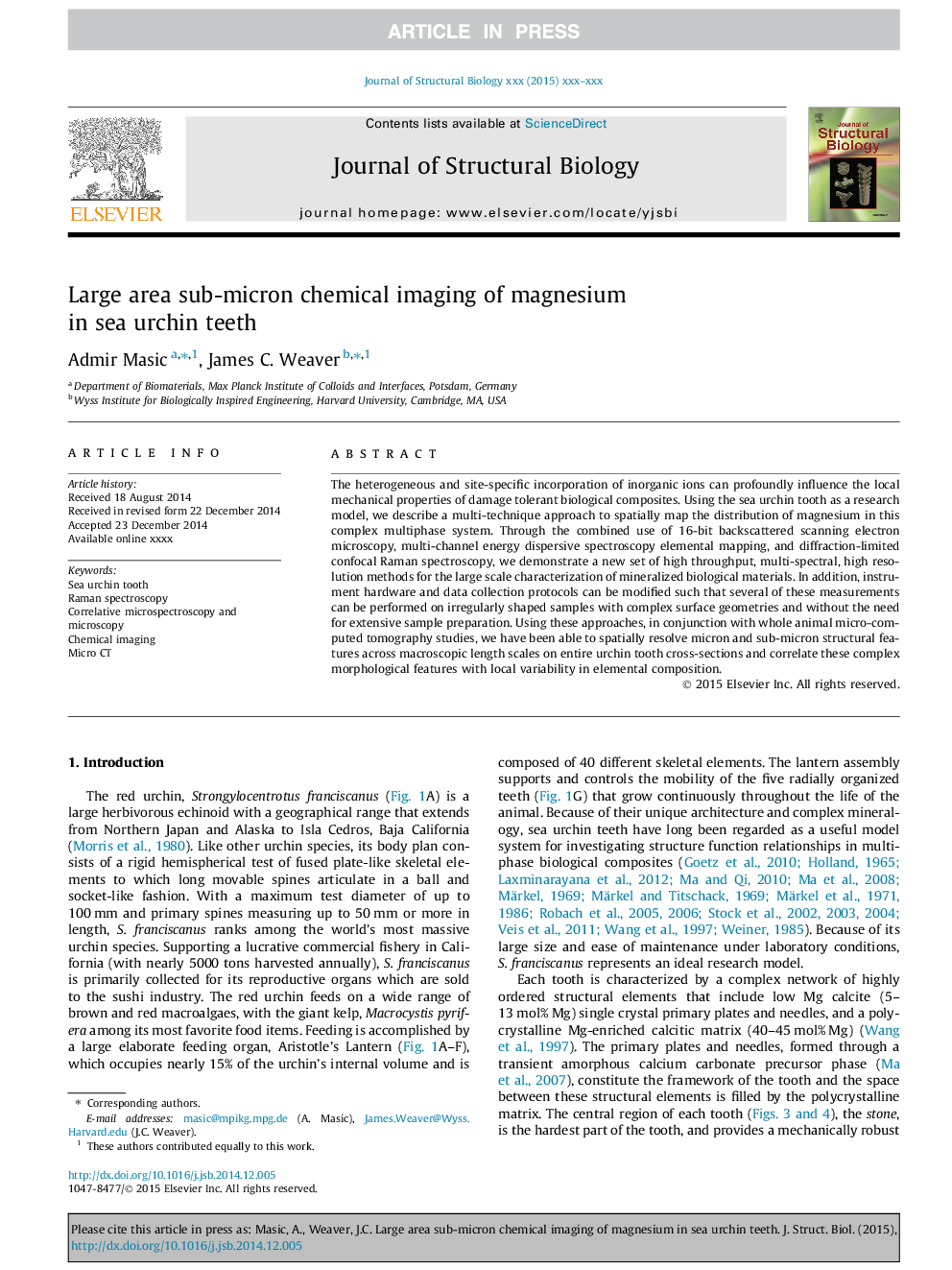| Article ID | Journal | Published Year | Pages | File Type |
|---|---|---|---|---|
| 5914002 | Journal of Structural Biology | 2015 | 7 Pages |
Abstract
The heterogeneous and site-specific incorporation of inorganic ions can profoundly influence the local mechanical properties of damage tolerant biological composites. Using the sea urchin tooth as a research model, we describe a multi-technique approach to spatially map the distribution of magnesium in this complex multiphase system. Through the combined use of 16-bit backscattered scanning electron microscopy, multi-channel energy dispersive spectroscopy elemental mapping, and diffraction-limited confocal Raman spectroscopy, we demonstrate a new set of high throughput, multi-spectral, high resolution methods for the large scale characterization of mineralized biological materials. In addition, instrument hardware and data collection protocols can be modified such that several of these measurements can be performed on irregularly shaped samples with complex surface geometries and without the need for extensive sample preparation. Using these approaches, in conjunction with whole animal micro-computed tomography studies, we have been able to spatially resolve micron and sub-micron structural features across macroscopic length scales on entire urchin tooth cross-sections and correlate these complex morphological features with local variability in elemental composition.
Related Topics
Life Sciences
Biochemistry, Genetics and Molecular Biology
Molecular Biology
Authors
Admir Masic, James C. Weaver,
